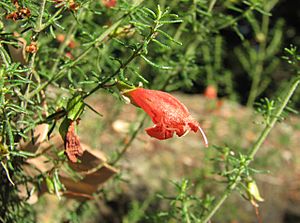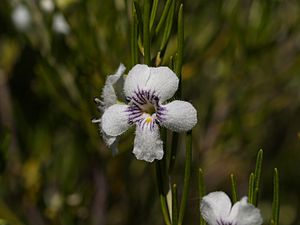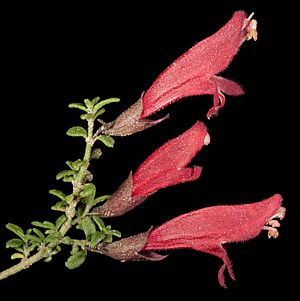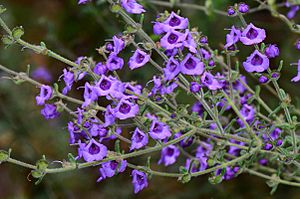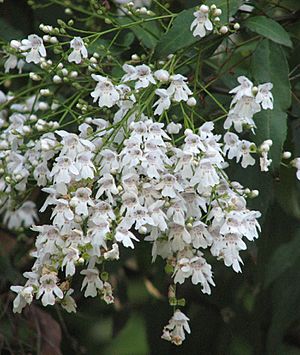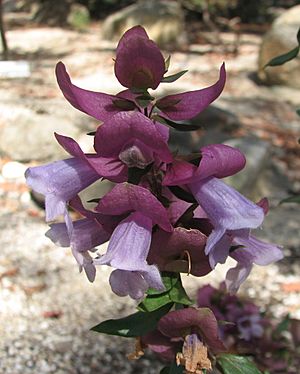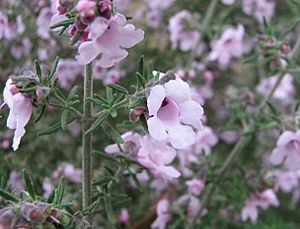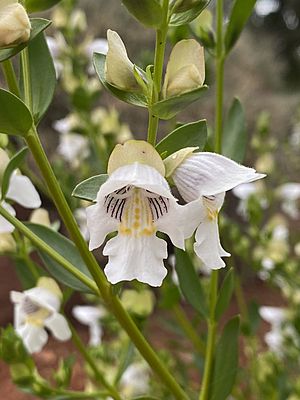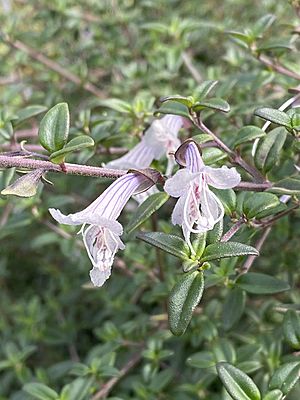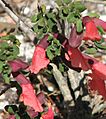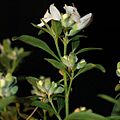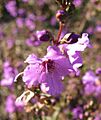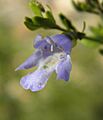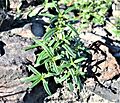Mintbush facts for kids
Quick facts for kids Mintbush |
|
|---|---|
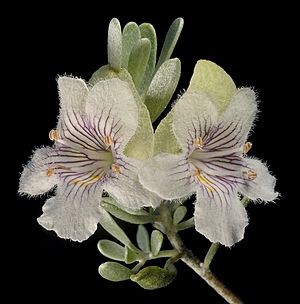 |
|
| Prostanthera althoferi | |
| Scientific classification |
|
| Kingdom: | Plantae |
| Clade: | Tracheophytes |
| Clade: | Angiosperms |
| Clade: | Eudicots |
| Clade: | Asterids |
| Order: | Lamiales |
| Family: | Lamiaceae |
| Subfamily: | Prostantheroideae |
| Genus: | Prostanthera Labill. |
| Species | |
|
See text |
|
| Synonyms | |
Prostanthera, often called mintbush or mint bush, is a group of about 100 types of flowering plants. All of these plants grow only in Australia. They are known for their minty smell. Most Prostanthera plants are shrubs, which are like large bushes. Some are small trees.
These plants have leaves that grow in pairs, opposite each other. Their flowers often grow in clusters. The flowers usually have two main parts, like lips. The lower lip has three sections, and the upper lip has two or a small dip. The flowers can be blue, purple, white, or even reddish.
Contents
What Does a Mintbush Look Like?
Most Prostanthera plants are shrubs, which are woody plants smaller than trees. Their leaves grow in pairs, one on each side of the stem. The flowers grow in groups, either where the leaves join the stem or at the ends of branches.
Flower Parts
Each flower has small leaf-like parts called bracts at its base. The green parts under the petals, called sepals, are joined at the bottom and have two tips. The colorful petals form a tube shape. This tube then opens into two "lips." The bottom lip has three parts that usually spread out. The top lip has two parts or a small notch.
The petals can be different colors. They range from bluish-purple to white, or sometimes they are more red. Inside the flower, there are four stamens. These are the parts that make pollen. The very tip of the stamen, called the anther, often has a small extra piece. The part that will become the fruit, called the ovary, has four sections. The very top of the flower, the stigma, has two branches.
How Mintbushes Got Their Name
The group of plants called Prostanthera was first officially described in 1806. This was done by a scientist named Jacques Labillardière. He wrote about it in his book Novae Hollandiae Plantarum Specimen. The first type of mintbush he described was Prostanthera lasianthos.
The name Prostanthera comes from an ancient Greek word. It means "an appendage" or "something added on." This name was chosen because of the small, spur-like parts found on the anthers inside the flowers.
Mintbushes and Moths
Prostanthera plants are important for some insects. The young forms, or larvae, of certain moths eat these plants. These moths belong to a group called hepialid moths. Two examples are A. eximia and A. ligniveren. These moths use the mintbush as a food source as they grow.
How People Use Mintbushes
Mintbushes are grown for a few different reasons. Many people grow them as ornamental plants. This means they are grown because they are beautiful and make gardens look nice. Their lovely flowers and often pleasant scent make them popular.
Besides being pretty, some mintbushes are also used for their essential oils. These oils can be used in perfumes or for their scent. Some types are also used as spices, adding flavor to food.
Images for kids
See also
 In Spanish: Prostanthera para niños
In Spanish: Prostanthera para niños


